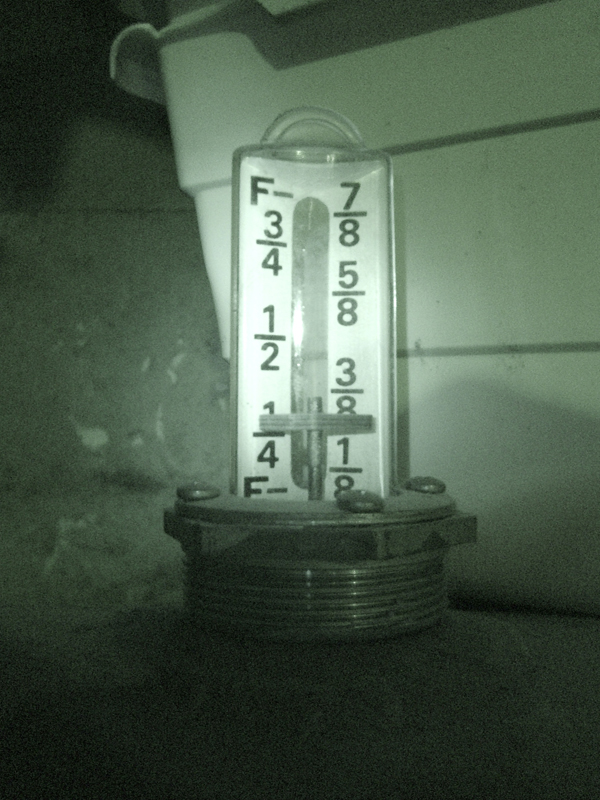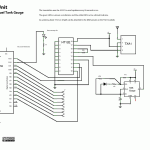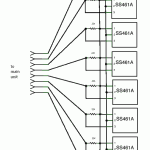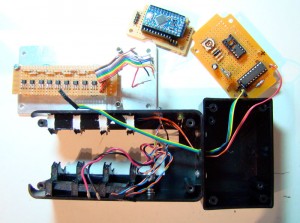
When I posted the original prototype of the Clock with Tics, Arduino Forum member mowcius commented that all the wiring and matrix driving could be greatly simplified with the LED matrices from Sure Electronics. While I was aware of the Nanjing-based company, I had not bought anything from them, nor had I seen them in the several electronics supermarkets that I had stumbled upon when I last visited the city.
Long story short: I bought a yellow LED 0832 module on ebay from Sure: they are remarkably cheap, about $9 each. Four of them can be strung together to make a respectable scrolling-message sign. Single units can be easily driven by an Arduino Duemilanove, but you can also buy a driver board that handles the higher current requirements if you need to string several together.
When I received it, I was busy with other matters and I put it aside. When I had a few hours here and there, I pulled it out and tried making the connection with an Arduino. I was not successful in getting past the self-test mode.
Last weekend, while waiting for replacement parts to arrive (also from Sure Electronics, by the way) for my ‘Shy Dildo’ project, I thought I’d attack the problem one last time. I had earlier unsuccessfully scoured the net for references to the 0832 module, but this time, I looked for “HT-1632”, which is the Holtek driver chip that’s used in the Sure module. Bingo!
I found several Arduino libraries that purport to work with HT1632 units. The first one that I successfully connected was from MakeHackVoid; it demonstrated the pin connections between the 0832 and the Arduino, and linked to libraries that enabled the 0832 to do the ‘crawling words’ scrolling thing. I spent most of the weekend playing with the code and re-working the somewhat erratic-looking font that came supplied with it. I could not, however, simply write a static string to the 0832.
Then I found Miles Burton’s library. This library has good documentation, and made it possible for me, a dopey artist, to figure out how to adapt the ‘Clock with Tics’ code from the presentation prototype to the Sure 0832 matrix. The process of getting to this point was complicated by several factors:
- A bad connection in a breadboard hookup wire
- Difficulties in sorting out the five different libraries that I had experimented with during the course of three days.
- A poor understanding (on my part) of the nature of chars and strings. I was unable to get my head around these concepts, and why the C language makes translation between chars and strings (and among other formats) so complicated. The Arduino String Library has limited documentation, and there doesn’t seem to be much in the way of helpful information elsewhere online. I don’t have any formal training in computer programming, and until Arduino I had avoided C.
The circuit for the new model should fit comfortably on one 6x9cm circuit board. I estimate that it is about 90% simpler to assemble. It has an added feature of a CDS (light cell) that allows the display to fade or brighten depending on the ambient light.
Clock with Tics for SURE Source Code (Github)
Clock with Tics for SURE Schematic (PDF)
Clock with Tics by Michael B LeBlanc is licensed under a Creative Commons Attribution-Noncommercial-Share Alike 2.5 Canada License.
Contact the writer for permissions beyond the scope of this license.




